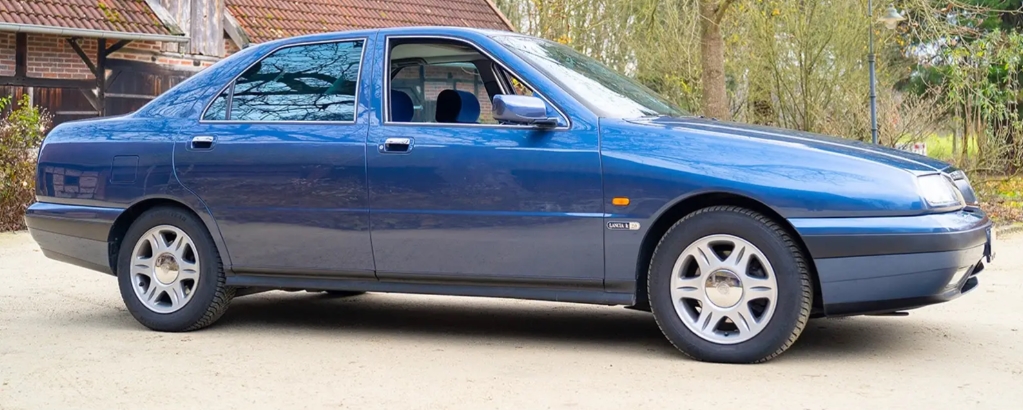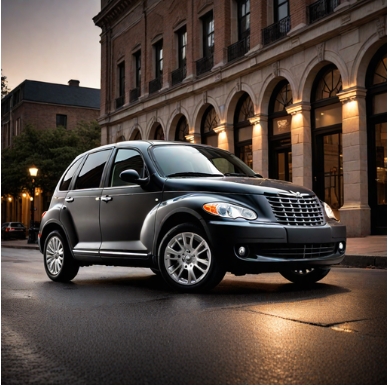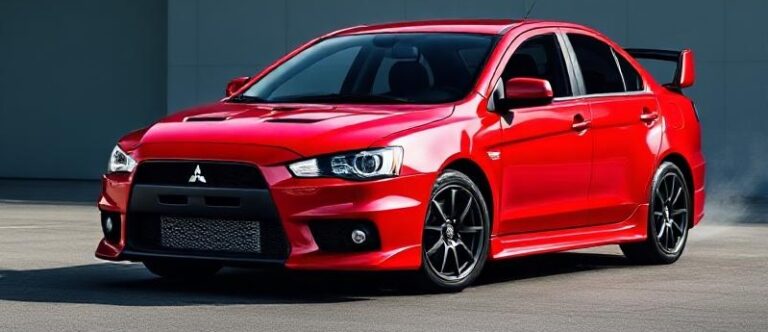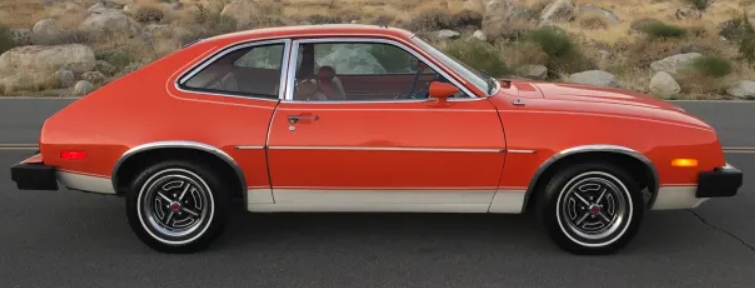Subtle Sophistication: A Deep Dive into the Evolution of the Lancia Kappa
In the annals of automotive history, some vehicles are celebrated for their raw power, others for their revolutionary design, and a select few for their motorsport dominance. The Lancia Kappa, however, belongs to a more rarefied category: the connoisseur’s choice. Produced from 1994 to 2000, it was not a car that shouted its virtues but rather whispered them through exceptional comfort, sophisticated engineering, and a dedication to quality that felt distinctly old-world. As the successor to the monumentally successful Lancia Thema, the Kappa had enormous shoes to fill. Its evolution across three distinct body styles and a host of nuanced trim levels tells the story of Lancia’s final, earnest attempt to compete in the executive class on its own terms.
The Foundation: A Legacy to Uphold (1994)
When the Lancia Kappa was unveiled at the 1994 Paris Motor Show, the automotive world was watching closely. Its predecessor, the Thema (1984-1994), had been a runaway success, a product of the “Type Four” platform co-developed with Fiat, Saab, and Alfa Romeo. It had re-established Lancia as a builder of prestigious, comfortable, and dynamically capable saloons, famously culminating in the Ferrari-engined 8.32.
The Kappa was tasked with modernizing this formula for the mid-1990s. Developed on the new “Type E” platform, it was designed to be a Lancia from the ground up, with a focus on ride quality, structural rigidity, and interior opulence. The design, penned by the I.D.E.A. Institute, was deliberately conservative. In an era of increasingly aggressive German design, the Kappa was a paragon of understatement. Its lines were clean and flowing, its proportions perfectly balanced, and its details, like the classic trapezoidal grille and elegantly simple light clusters, spoke of a quiet confidence. This was not a car for the brash; it was a mobile Italian salotto—a living room on wheels.
This philosophy was most evident inside. The Kappa’s cabin was its crowning achievement. Lancia eschewed the hard, dark plastics of its rivals, instead swathing the interior in high-quality fabrics and, most famously, Alcantara. This soft, durable suede-like material covered the seats, door panels, and even the headliner on higher-spec models, creating an ambiance of warmth and luxury unmatched in its class. For the ultimate indulgence, buyers could specify Poltrona Frau leather, a material so supple it was typically reserved for high-end Italian furniture.
Upon its launch in 1994, the Kappa was offered exclusively as a four-door saloon, or Berlina, with an initial range of engines and trim levels designed to cater to a broad spectrum of executive buyers.
Initial Trim Levels (1994-1998):
LE (Linea Executive): The entry-point, though “base model” is hardly fair. Standard equipment was generous for the time, including driver and passenger airbags, ABS, climate control, power windows, and central locking.
LS (Linea Superiore): The mainstream choice, adding features like alloy wheels, a more luxurious application of Alcantara, fog lights, and often wood trim accents on the dashboard and doors.
LX (Linea Extra): The luxury flagship. This trim typically included Poltrona Frau leather upholstery, electrically adjustable and heated front seats, cruise control, and an upgraded sound system.
Initial Engine Lineup (1994-1998):
2.0 16v: A 1,995 cc four-cylinder producing 145 PS, serving as the sensible entry point.
2.4 20v: A 2,446 cc five-cylinder producing 175 PS. This engine became the heart and soul of the Kappa range, celebrated for its uniquely smooth, warbling soundtrack and linear power delivery.
3.0 V6 24v: A 2,959 cc Alfa Romeo “Busso” V6 engine, producing 204 PS. This provided effortless, refined performance befitting the top of the range.
2.0 16v Turbo: A 1,995 cc four-cylinder turbo, a spiritual successor to the famed Thema Turbo i.e. It produced a potent 205 PS, offering near-V6 performance with a more frantic, engaging character.
2.4 TD: A 2,387 cc five-cylinder turbodiesel with 124 PS. This engine offered immense torque and fuel economy for long-distance cruising, though it lacked the refinement of later common-rail diesels.
Expanding the Family: The Coachbuilt Masterpieces (1996-1997)
While the Berlina was a refined and competent executive car, Lancia broadened the Kappa’s appeal by introducing two niche, coachbuilt variants that elevated the model to a new level of exclusivity.
- The Station Wagon (SW) – 1996
Unveiled in 1996, the Kappa SW was no mere utilitarian estate. The conversion was designed and meticulously executed by the legendary design house Pininfarina. Rather than simply grafting a box onto the rear of the saloon, Pininfarina created a harmonious and elegant design, with a gently sloping roofline and a distinctive rear pillar treatment. Each SW began life as a standard Berlina bodyshell before being shipped to Pininfarina’s factory for hand-finishing. This bespoke process ensured exceptional build quality. To cope with heavy loads while maintaining Lancia’s signature ride comfort, all SW models were equipped with “Nivomat” self-leveling rear suspension as standard. It was the perfect vehicle for the well-heeled family that valued style as much as substance.
- The Coupé – 1997
Arguably the most desirable Kappa, the Coupé arrived in 1997. It was an exercise in pure Italian grand touring style. Built by the specialist coachbuilder Maggiora, the Coupé was more than just a two-door Berlina. It rode on a wheelbase shortened by 120mm, giving it tighter, more purposeful proportions. Every exterior panel, save for the bonnet, was unique. The frameless door glass, the steeply raked rear window, and the subtle “kick-up” over the rear wheel arch gave it a distinct and sophisticated personality. This was not a hard-edged sports car but a comfortable, fast, and exceptionally stylish long-distance cruiser. Production was extremely limited, with only around 3,265 units ever made, ensuring its exclusivity. The Coupé was offered only with the more powerful engines: the 2.4 five-cylinder, the 2.0 five-cylinder turbo, and the 3.0 V6. Its interior was invariably lavish, usually trimmed in Poltrona Frau leather, cementing its status as the ultimate expression of the Kappa.
The Mid-Life Refresh: Refinement and New Technology (1998)
In 1998, Lancia introduced a subtle but significant facelift across the Kappa range. Visually, the changes were minor—a new design for the alloy wheels, slightly reprofiled bumpers, and the addition of body-coloured side skirts. The real evolution occurred under the skin and inside the cabin.
The interior received a new, more modern steering wheel, a refreshed instrument cluster with improved graphics, and superior wood trim. The central console was redesigned to accommodate a new, optional integrated satellite navigation system made by Blaupunkt.
The most important updates, however, were to the engine lineup. Lancia embraced new technologies to improve both performance and efficiency.
Updated Engine Lineup (1998-2000):
2.0 20v: The old four-cylinder was replaced by a new 1,998 cc five-cylinder engine, producing 155 PS. It was equipped with a Variable Intake System (V.I.S.) that improved torque at lower engine speeds, making for a more flexible driving experience.
2.0 20v Turbo: The 16v Turbo was replaced by a more powerful five-cylinder turbo variant. This 1,998 cc engine now produced a formidable 220 PS, making it the most powerful Kappa and a true “sleeper” capable of challenging contemporary sports saloons.
2.4 JTD: This was a landmark engine. The old 2.4 TD was replaced by a new 2,387 cc five-cylinder unit featuring common-rail direct injection technology. At 136 PS, it was more powerful, but critically, it was vastly quieter, smoother, and more efficient. It transformed the diesel Kappa from a noisy workhorse into a refined, long-legged tourer.
The 2.4 20v petrol and 3.0 V6 engines remained largely unchanged throughout production.
Updated Trim Levels (1998-2000):
The trim structure was also slightly revised. While LE, LS, and LX remained, a new top-tier designation, Executive, was sometimes used to denote models equipped with every conceivable option, including the advanced navigation system and exclusive interior appointments. The “Plus” suffix was also used on LS and LX models to signify packages with additional equipment.
.

.
The End of an Era (2000)
Production of the Kappa Berlina and SW ceased in mid-2000, with the last of the hand-built Coupés rolling out of the Maggiora factory in early 2001. Commercially, the Kappa was not the resounding success Lancia had hoped for. It sold just over 117,000 units in total—a fraction of what its German rivals managed. The brand’s diminishing presence outside of Italy, coupled with the Kappa’s discreet styling in an increasingly ostentatious market, limited its mainstream appeal.
The Kappa was succeeded by the Lancia Thesis, a car that rejected the Kappa’s classicism in favor of a bold, avant-garde design. While technically fascinating, the Thesis proved to be even more of a niche product, marking the end of Lancia’s time as a true contender in the global executive market.
Today, the Lancia Kappa is remembered by enthusiasts as the last “true” Lancia flagship—a car that perfectly embodied the brand’s historic values of comfort, engineering innovation, and understated elegance. From the beautifully balanced Berlina to the coachbuilt elegance of the Pininfarina SW and the exclusive charm of the Maggiora Coupé, the Kappa’s evolution showcases a commitment to quality and character that has become all too rare. It remains a sublime and sophisticated machine, a quiet testament to a time when Lancia still dared to be different.







